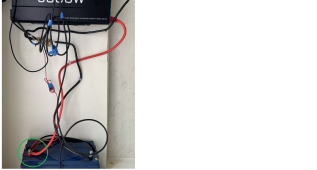schmism
Solar Addict
no misunderstanding, 100% that wire is at best 1/4 the cross sectional area as a 4/0 it needs to be to carry 250+ amps (if we want to entertain the idea that inverter would actually put out that kind of power)Schmism thought you had 10AWG between your inverter and battery but I’m positive you mean from your solar panels to your controller. The cables from your inverter to battery look as though they are Renogy cables. Am I correct?







